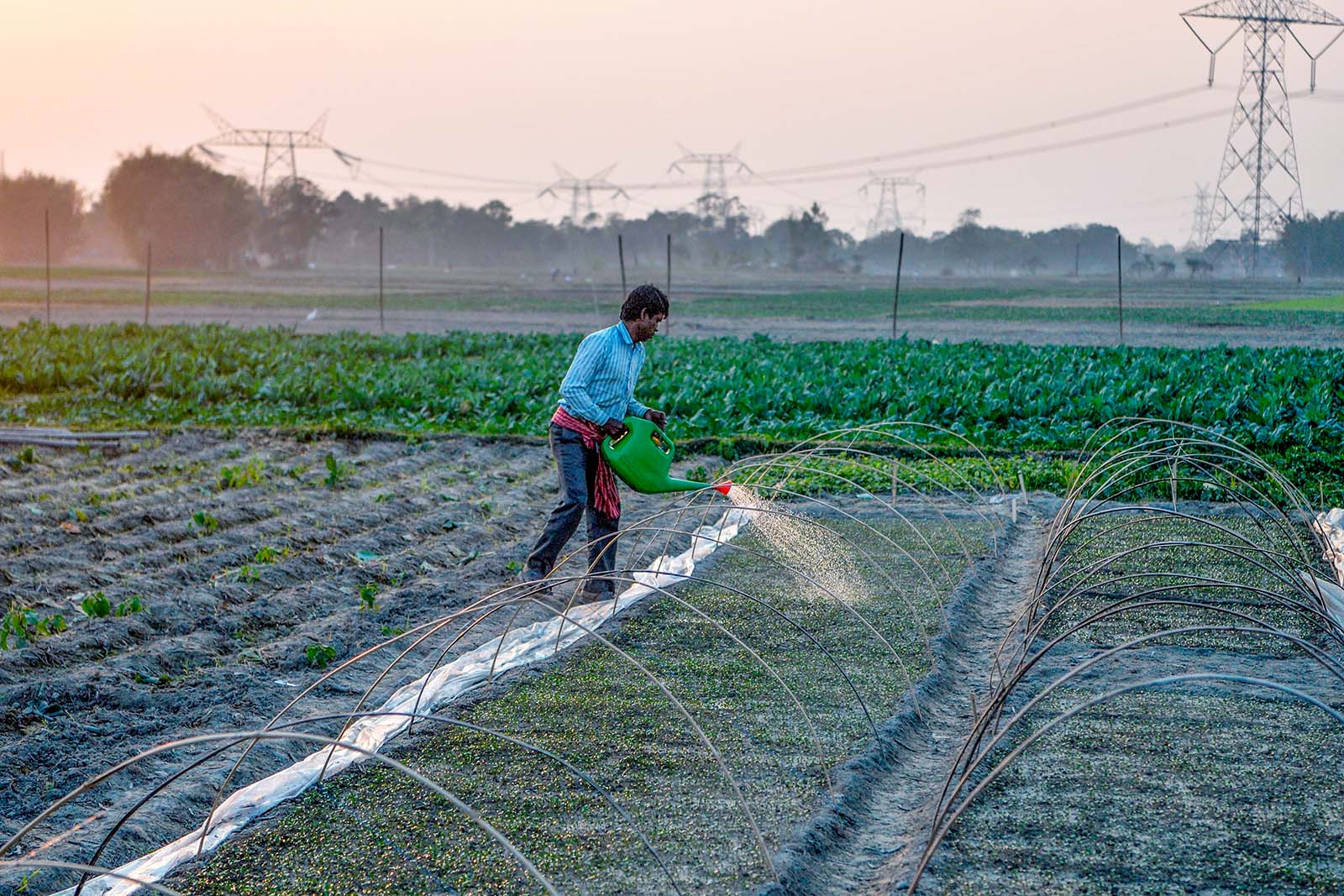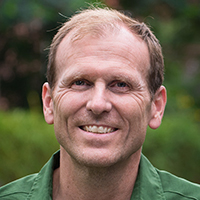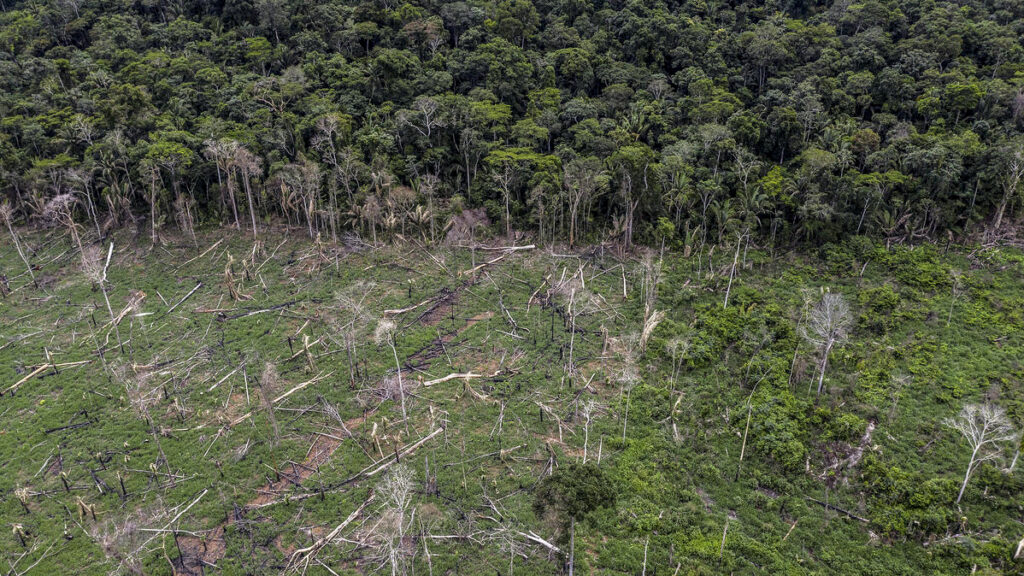Gary White: There’s a Way to Solve the Global Water Crisis — Investment

A farmer pours water on broccoli sprouts in a field on the outskirts of Siliguri. Improving efficiencies in agricultural use of water would have an enormous impact on source sustainability and access.
Photo: Diptendu Dutta/AFP via Getty Images
One of the most dire immediate threats from climate change concerns water availability. Water usage around the world continues to rise with diminishing supply. The projections for global water availability aren’t promising — by 2025, two-thirds of the world’s population may face water shortages. Currently, 2.7 billion people experience water scarcity at least one month a year.
BRINK spoke with Gary White, who partnered with Hollywood actor Matt Damon to found Water.org and WaterEquity — a global nonprofit combating water scarcity by providing affordable financing to underprivileged communities lacking access to clean water. In 2015, White wrote in BRINK on the need for the financial sector to get more active in addressing water scarcity. “By nudging financial systems, hundreds of millions of people could gain access to water and sanitation,” he argued.
Since then, the water challenge has only become more acute as the impacts of climate change are increasingly being felt. In this interview with BRINK editor Antoun Issa, White maintains that it’s going to take an all-team effort from governments to financial institutions to ensure water security for all on the planet: “Investment on every possible level is what will end the water crisis and bring water and sanitation access to all.”
Addressing Water Scarcity
ISSA: Since you wrote for us five years ago, 200 million more people now live in water-scarce areas, and that’s despite your organization’s efforts, which have improved water access for 27.9 million people. What more do we need to do to achieve full water security for all on this planet?
WHITE: Addressing water and sanitation is, in many ways, about addressing a financial gap. Charity alone will never be enough. The biggest bottleneck between people and safe water and sanitation is access to affordable finance. At Water.org, we address that through an innovation called WaterCredit, which matches microfinance institutions with the water and sanitation crisis so that people can get the small, affordable loans they need in order to provide their own water and sanitation solutions. And we see a 99% repayment rate. As you mentioned, we’ve reached about 28 million people through this approach, adding 2 million more each quarter and through our partners building a loan portfolio of more than $2 billion. But we are always innovating. Since I wrote the article for BRINK in 2015, Water.org incubated and spun off WaterEquity, the first-ever asset manager exclusively focused on solving the global water crisis. WaterEquity’s funds invest in a portfolio of high-performing financial institutions and enterprises in emerging markets to deliver access to water supply and sanitation to families living in poverty.
ISSA: 1.1 billion people today lack access to water. Demand for water is only increasing, and by 2030, global demand will outstrip supply by 40%. By 2025, two-thirds of the world’s population may face water shortages. With climate change resulting in more arid and semi-arid regions, the U.N. predicts up to 700 million will be displaced by water scarcity by 2030. These are staggering numbers, and with little global action to tackle climate change, there’s no indication these trends will reverse anytime soon. What challenges have you faced in trying to get world leaders, local governments and industry leaders to take the water crisis seriously?
WHITE: Without a doubt, achieving the U.N. target of universal safe water and sanitation in the next decade is going to be made even more challenging by climate change. But the world is finally taking note of the strong link between the climate crisis and the water crisis. I just returned from a high-level summit in London where water, sanitation and hygiene were positioned at the forefront of the fight against climate change. Leaders in the public, private and philanthropic sectors met to work on solutions. At Water.org, we see opportunities for innovative financing to address some of the climate risks to water and sanitation systems. For example, we can make climate-smart investments that raise energy efficiencies and reduce emissions in the water sector, like encouraging utilities to fix leaky pipes.
Investment on every possible level is what will end the water crisis and bring water and sanitation access to all.
ISSA: Do you have plans to expand your operations beyond microfinancing, noting that it alone is not enough to reverse these trends?
WHITE: We know that the WaterCredit model of working with partners to provide affordable finance works. We have recently taken this to a more macro level with the Global Credit Enhancement Facility, or GCEF. With our partners at the International Finance Corporation, we launched the GCEF to provide credit enhancement support structured as partial credit guarantees to local commercial banks to roll out new lending products for household water and sanitation. We are also currently growing our work into the water policy arena. There’s a multiplicative power in combining bottom-up and top-down approaches. Water.org’s strategic plan now includes systems impact: impact on the whole enabling environment, the policies, practices and the systems that affect everyone who wants to invest in their own water solutions. It’s sort of a matter of finding everyone who has a positive role in the sector and connecting them to one another to accelerate impact.
Private Sector Engagement and Fixing the Agriculture Problem
ISSA: The role of the private sector in water resources has been contentious over the years. Attempts to privatize water resources throughout the world have had mixed results, at times drawing sharp criticism from the U.N. for making access to water harder for poorer communities. Media stories abound of beverage companies draining publicly owned natural springs and creeks to sell in bottles. And yet, you’ve managed to create a successful model that has enlisted private sector partners to the benefit of underprivileged communities across the world. What role, if at all, should the private sector play in helping to address water scarcity?
WHITE: We consider the private sector a valuable partner. Our approach has become what we call the “dot connector.” We work with utilities to improve and expand services to the poor. We work with governments to help shape policies that will bring more services online for people living on less than $6 a day. And we work with financial institutions locally and globally.
As one example, we’ve had a longstanding relationship with AB inBev and its Stella Artois brand. Through our partnership, consumers of certain Stella Artois products helped provide access to safe water for more than 1.7 million people in the developing world. And as environmental, social and governance principles and concern over the impacts of climate change become more prominent for businesses, we are forming more partnerships with the private sector. Investment on every possible level is what will end the water crisis and bring water and sanitation access to all.
ISSA: Agriculture has been identified as a major sector affecting the efficiency of water distribution, with 60% of freshwater use in agriculture wasted due to leaky irrigation. In fact, the Food and Agriculture Organization saw a parallel between countries that rely heavily on agriculture as a sector and their overall low rankings in water efficiency, particularly in Southeast Asia. What needs to be done to help the countries that are agriculture-reliant and, in particular, the agricultural industry in improving water efficiency?
WHITE: Agriculture has the biggest straw in the ground. Improving efficiencies in agricultural use of water would have an enormous impact on source sustainability and access. But we also can become more water-efficient in terms of drinking water and, at the same time, reduce our carbon footprint. For example, each year, 8.6 trillion gallons of distributed water is lost through leaky pipes. Globally, if we can reduce even just 20% of this water loss by 2050, we can save nearly a gigaton of carbon emissions, which is equal to the carbon emissions produced by 2 billion barrels of oil consumed.
Signs of Hope and Social Entrepreneurship
ISSA: Where have you seen improvements in addressing water scarcity over the years? Have you seen anything that gives you hope that the dire U.N. predictions won’t come true?
WHITE: I always have hope. I remain convinced that we can solve the global water crisis in my lifetime. The problem becomes more solvable if we consider targeting charity to those who need it most and using financing to empower others to achieve their own water solutions. Interventions like WaterCredit unleash the latent demand and problem-solving power of our borrowers. Each repaid loan goes on to enable the next family. Finance has the power to reach more people faster. Our programs have demonstrated that clean water and sanitation is a viable market. There needs to be more support through better policies and an increase in capital injected into the system to encourage other market-based solutions.
ISSA: You’ve created a successful social entrepreneurship model that is making an impact and raising awareness. What would you say to other would-be social entrepreneurs thinking of entering this space?
WHITE: It’s certainly a question I get quite a bit. The first thing to think about is, what are you drawn to? And is your greatest passion at the intersection of what would be a great need? And then I think the next question, which is very important, is: Is anybody else doing it? You must give yourself a rigorous kind of analysis and say, does the world need another organization with an entrepreneur, or can I work within another organization that’s doing this? And if you truly feel that people are missing the point and you have an innovation that’s going to be different and important, then I say, go for it.






